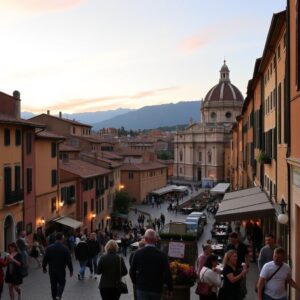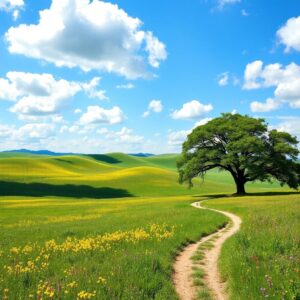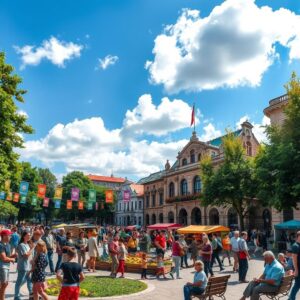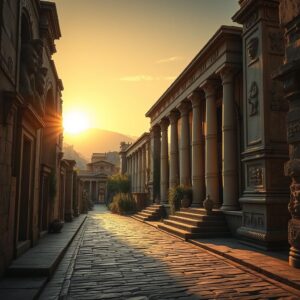
Explore & Play
Discover interesting topics and solve the accompanying crossword puzzle.
Japanese City Crossword | Japan’s Urban Wonders
Table of Contents
Japanese City Crossword
You can either fill in the crossword puzzle directly on this page or click the button in the bottom right corner to print it for free.
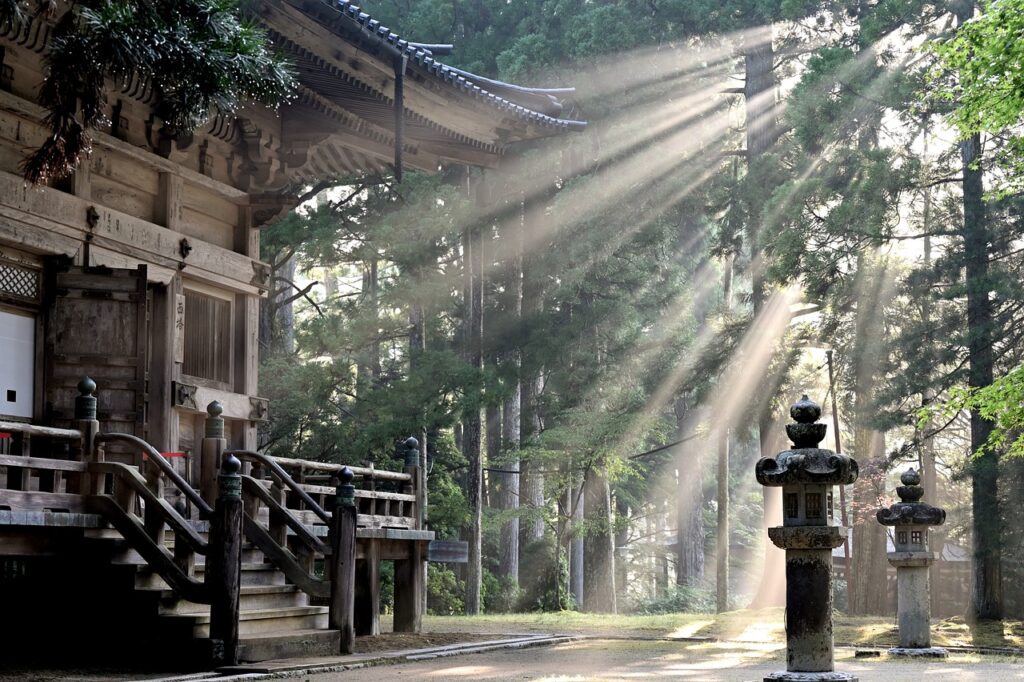
Nature and Urban Life: A Comparison of Japan’s Cities
I. Introduction
Japan is a land where vibrant cities and breathtaking nature coexist, each telling a unique story through its landscapes and culture. The country’s diverse urban environments are often intertwined with stunning natural elements, creating a dynamic interplay between city life and the great outdoors. This article aims to explore how various cities across Japan maintain this balance, showcasing their distinct characteristics and offerings. As you read through, you may find it interesting to engage with our crossword puzzle featuring 50 famous Japanese cities, which highlights the vibrant tapestry of urban life throughout the nation.
II. The Urban Landscape of Japan
A. Tokyo: The Bustling Metropolis
As the capital city, Tokyo embodies the height of urban life in Japan with its skyscrapers and vibrant culture. The city’s landscape is a mesmerizing blend of the ultramodern and the traditional, where neon lights illuminate ancient shrines and bustling streets. Residents and visitors alike enjoy a plethora of attractions, from the high-fashion districts of Shibuya and Harajuku to the historic Asakusa area, home to Senso-ji Temple. The rhythm of life in Tokyo is fast-paced, making it a focal point of innovation and creativity.
B. Osaka: A City of Modern Architecture
Known for its modern architecture and bustling street food scene, Osaka offers a unique blend of tradition and innovation. The city’s skyline is punctuated by impressive structures such as the Umeda Sky Building and the iconic Osaka Castle. Here, culinary delights abound, with local favorites like takoyaki and okonomiyaki drawing food lovers from near and far. The friendly atmosphere and lively neighborhoods make Osaka a city that invites exploration and enjoyment.
C. Yokohama: Waterfront Wonders
Just south of Tokyo, Yokohama is famous for its picturesque waterfront and vibrant city life. The city boasts the largest Chinatown in Japan, filled with shops and eateries offering authentic Chinese cuisine. Visitors can also stroll along the beautiful Yamashita Park or take in the breathtaking views from the Landmark Tower. Yokohama perfectly balances urban charm with scenic coastal beauty, making it a must-visit destination.
D. Nagoya: The Heart of Industry
Nagoya stands as a testament to Japan’s industrial prowess, housing major corporations and cultural landmarks. As one of the largest cities in Japan, Nagoya plays a vital role in the automotive industry, hosting the headquarters of Toyota. Beyond its industrial reputation, the city is rich in culture, with attractions such as Nagoya Castle and the Atsuta Shrine showcasing its historical significance.
III. Nature’s Embrace in Urban Areas
A. Sapporo: Snowy Serenity
Renowned for its annual snow festival, Sapporo combines urban life with stunning winter landscapes. The city transforms into a winter wonderland each February, attracting visitors eager to admire the intricate snow sculptures and enjoy seasonal activities. Beyond the festival, Sapporo offers beautiful parks and gardens, such as Odori Park, where residents and tourists can appreciate the changing seasons amidst the urban backdrop.
B. Kyoto: Harmony of Nature and Tradition
In Kyoto, ancient temples are set against the backdrop of lush gardens, illustrating a deep respect for nature. The city is a UNESCO World Heritage site, with stunning attractions like Kinkaku-ji (the Golden Pavilion) and the Arashiyama Bamboo Grove. Kyoto’s historical significance and commitment to preserving its natural beauty create a serene atmosphere that attracts visitors seeking tranquility amidst urban life.
C. Nara: Free-Roaming Deer and Temples
Nara’s famous deer roam freely amidst historical sites, blending nature with cultural heritage. As Japan’s first capital, Nara is home to impressive temples like Todai-ji, which houses a giant Buddha statue. The coexistence of wildlife and historical landmarks in Nara creates a unique experience for visitors, showcasing how urban environments can integrate natural elements.
D. Shizuoka: Views of Mount Fuji
Nestled near Mount Fuji, Shizuoka provides breathtaking views and a strong connection to the natural world. The city is famous for its green tea production and offers ample opportunities for outdoor activities, including hiking and sightseeing. Visitors can enjoy the stunning vistas of Japan’s iconic peak while exploring the city’s urban amenities, creating a perfect blend of nature and city life.
IV. Coastal Cities and Their Unique Offerings
A. Kobe: A Port City with Scenic Views
Kobe’s scenic harbor and surrounding mountains offer a picturesque urban landscape. Known for its high-quality beef and beautiful waterfront, the city attracts food enthusiasts and nature lovers alike. The iconic Kobe Port Tower and the scenic Meriken Park create a vibrant atmosphere, inviting visitors to explore the city’s unique charm.
B. Fukuoka: Gateway to the Sea
As a major city in Kyushu, Fukuoka boasts beautiful beaches and a lively urban atmosphere. The city’s coastal location allows residents to enjoy various water sports and outdoor activities. Additionally, Fukuoka is known for its delicious ramen and dynamic nightlife, making it a popular destination for both locals and tourists.
C. Nagasaki: A Historical Coastal Gem
Nagasaki’s unique history is complemented by its stunning coastal scenery. Once a major port for international trade, the city showcases a blend of cultural influences, reflected in its architecture and cuisine. Visitors can explore sites such as Glover Garden and the Peace Park, which honor the city’s historical significance while providing breathtaking views of the surrounding landscape.
V. The Balance of Nature and Urbanization
A. Kanazawa: Preserved Edo-Period Charm
Kanazawa is renowned for its preserved districts that showcase a blend of urban living and natural beauty. The city is home to Kenroku-en Garden, one of Japan’s most famous gardens, offering visitors a tranquil escape from the hustle and bustle of urban life. Kanazawa’s commitment to preserving its cultural heritage while embracing modernity exemplifies the balance between nature and urbanization.
B. Takamatsu: Udon and Urban Green Spaces
Takamatsu features urban parks and is famous for its delicious udon noodles, exemplifying a balance between nature and urban life. Ritsurin Garden, a historic garden with beautiful landscapes, is a highlight for visitors. The city’s culinary scene, coupled with its green spaces, creates a harmonious environment that residents cherish.
C. Hokkaido: The Northernmost Nature Retreat
Hokkaido’s vast landscapes and natural parks contrast sharply with its urban centers. Known for its ski resorts and beautiful flower fields, the region offers a unique blend of outdoor activities and urban living. Cities like Sapporo serve as gateways to the surrounding natural wonders, allowing residents to enjoy the best of both worlds.
VI. The Impact of Urbanization on Natural Spaces
A. Environmental Challenges in Major Cities
Rapid urbanization poses challenges for cities like Tokyo and Osaka, impacting their natural environments. Issues such as pollution, habitat loss, and climate change threaten the delicate balance between urban development and nature. As cities continue to grow, it becomes crucial to address these challenges to preserve the environment for future generations.
B. Sustainable Practices in Urban Planning
Many cities, including Yokohama and Kobe, are adopting sustainable practices to maintain their natural surroundings. Initiatives such as green roofs, urban parks, and sustainable transportation systems are being implemented to enhance urban life while minimizing environmental impact. These efforts showcase the commitment of Japanese cities to harmonize urbanization with nature.
VII. Reflections on the Urban-Nature Connection
As we explore Japan’s cities, it becomes evident that the harmony between urban life and nature plays a crucial role in the nation’s identity. Each city, with its unique blend of cultural and natural elements, offers a glimpse into the diverse experiences that Japan has to offer. By understanding this connection, we can appreciate the richness of Japanese urban life and the importance of preserving its natural heritage.
To further engage with the captivating world of Japanese cities, take a moment to play our crossword puzzle featuring 50 famous locations. It’s a fun way to discover more about the vibrant urban landscapes and stunning natural settings that Japan has to offer.
Share to...
I hope you enjoy the content.
Want to receive our daily crossword puzzle or article? Subscribe!
You may also be interested in
Share to…
Want to receive our daily crossword puzzle?
-
Jigsaw Puzzles
Art Nouveau Jigsaw Puzzle with Betta Fish in Lush Garden Scene 250 | 300 | 500 Pieces
kr 348,00 – kr 439,00Price range: kr 348,00 through kr 439,00 Select options This product has multiple variants. The options may be chosen on the product page -
Jigsaw Puzzles
Cozy Art Nouveau Cat Puzzle 250 | 300 | 500 Pieces
kr 348,00 – kr 439,00Price range: kr 348,00 through kr 439,00 Select options This product has multiple variants. The options may be chosen on the product page -
Jigsaw Puzzles
Zodiac Ink Dog Puzzle: Artful Elegance 250 | 300 | 500 Pieces
kr 348,00 – kr 439,00Price range: kr 348,00 through kr 439,00 Select options This product has multiple variants. The options may be chosen on the product page
